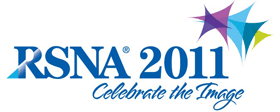
Abstract Archives of the RSNA, 2011
David S. Hirschorn MD, Presenter: Nothing to Disclose
1) Discuss ranges of spatial and contrast resolution for medical imaging. 2) Explore options for calibration and quality assurance. 3) Understand the impact of ambient light and viewing distance and angle on medical image display.
Mobile devices have significantly smaller displays than desktop or even laptop computers to make them lighter and more easily transported. They are also designed for shorter viewing distances which require smaller pixels. The smaller total display size tends to reduce the number of pixels, while the smaller pixel size tends to increase the number of pixels. On balance, these displays typically have considerably fewer pixels than their stationary counterparts. Nonetheless, even desktop displays typically have less resolution than the original image size of a radiograph which is typically about 5 megapixel (MP) for a chest radiograph. And both types of displays have more resolution than a single CT image, which is 0.25 MP. Since these devices do allow zooming and panning, they may be suitable for image interpretation under controlled circumstances.
The main purpose of the DICOM Part 14 Grayscale Display Function is to ensure that contrast is preserved across the range of shades of gray from black to white, particularly at the edges where uncalibrated displays tend to fall off. With desktop displays this can be measured with a photometer, either external or built-in, and graphics adapter adjustments can be made to make the display conformant. Mobile devices typically do not offer this degree of adjustability. This requires a different approach to DICOM curve conformance, and a reasonable alternative is to present the user with a visual challenge to identify low contrast targets placed randomly on the display. If the user can find them and tap on them, then the display may be considered compliant, and if not, then the display should not be relied upon.
Hirschorn, D,
Displays and Quality Assurance. Radiological Society of North America 2011 Scientific Assembly and Annual Meeting, November 26 - December 2, 2011 ,Chicago IL.
http://archive.rsna.org/2011/11001638.html

